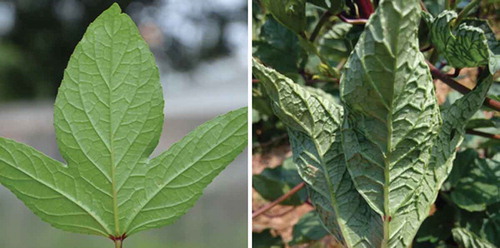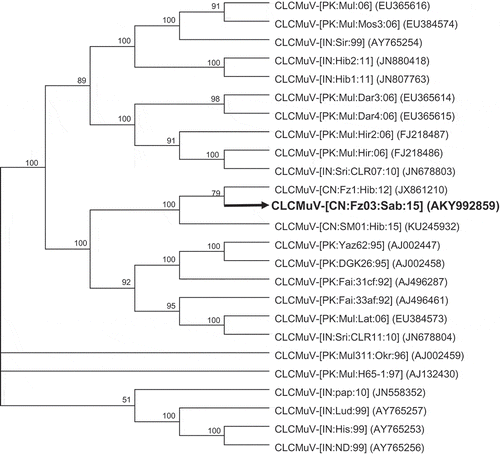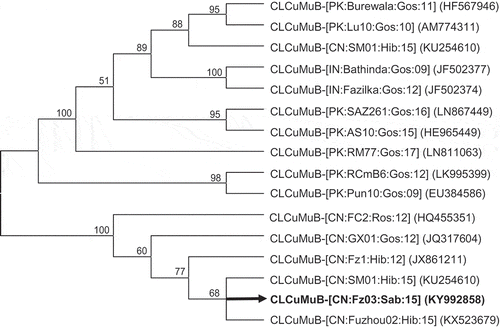Figures & data
Fig. 1 (Colour online) Symptoms exhibited by Hibiscus sabdariffa from which Cotton leaf curl Multan virus (CLCuMuV) and its associated satellite Cotton leaf curl Multan betasatellite (CLCuMuB) were detected by PCR. (Left) healthy H. sabdariffa leaf; (right) diseased leaf.

Fig. 2 Phylogenetic relationships of the newly identified Cotton leaf curl Multan virus (CLCuMuV) affecting H. sabdariffa (black and thickened line) with other CLCuMuV. The numbers near the branches indicate the percentage of bootstrap replicates supporting the branch. Nodes with bootstrap supports (BP) < 50% are collapsed. Virus isolates are presented according to the latest guidelines (talk.ictvonline.org/ictv_wikis/m/files_gemini/5120.aspx) and their accession numbers in NCBI are provided in brackets.

Fig. 3 Relationship of the Fujian isolate of Cotton leaf curl Multan betasatellite (CLCuMuB, black and thickened line) with other CLCuMuBs. The numbers near the branches indicate the percentage of bootstrap replicates supporting the branch. Nodes with bootstrap supports (BP) < 50% are collapsed. CLCuMuB isolates are presented according to the latest guidelines (talk.ictvonline.org/ictv_wikis/m/files_gemini/5120.aspx) and their accession numbers in NCBI are provided in brackets.

